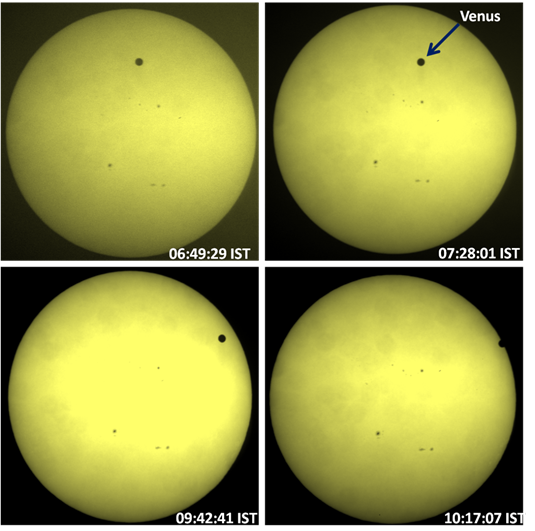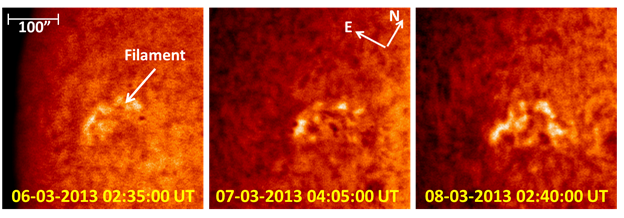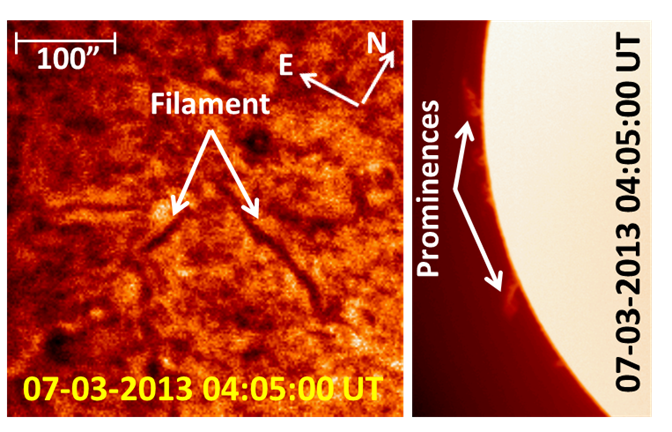Thaltej Solar Flare Telescope
During the course of my PhD, I was involved in establishing a 10-cm aperture refracting type telescope facility for observing full-disk solar chromosphere. The history of the study of solar atmosphere in Hα wavelength is of several decades and various ground-based observatories in India are operational in this regard viz. ARIES, Nainital operates a 15-cm high resolution Hα Coude type telescope and Udaipur Solar Observatory, a part of Global Oscillation Network Group-Global High-resolution Hα network (GHN) operates a full-disk observation. However, the full-disk observations usually lack in the temporal cadence (best available is ~1 min from GHN) however, on the other hand, accurate tracking of High-resolution observations in view of accurate spatial span of the image remained a major concern. The high-temporal cadence is specifically required in view of addressing science issues viz. cooling of the solar flare plasma, effect of flux-ropes etc. Therefore, to fill this gap, we established a unique facility with full-disk high temporal cadence observations following specifications:
Aperture: 10 cm
F#: ~f/16
Spatial resolution: 2arcsec/pixel (~1500km)
Hα filter: Daystar professional Quantum filter
Waveband: 6562.8 Ǻ (central wavelength and can vary in the range of ± 0.5 Ǻ)
FWHM: 0.3 Ǻ
Time cadence: 1.154 s
We named this facility as Thaltej Solar Flare Telescope, Physical research laboratory (TSFT-PRL). This facility has been operational for observing white-light Sun since April 2012 and we have observed a historical astronomical event of Venus transit occurred on 6th June 2012. Figure 1 show the time-series of images observed from SFT during Venus transit event. However, the full-fledge Hα observations from SFT has started from March 2013. Figure 2 shows the AR11689 on 6th March 2013 at 02:35UT. This AR has been very complex enough with a M-shaped filament as shown by arrow. Therefore we have tracked this AR and the observations till 8th March have been shown in the Figure 2. Figure 3 - Left panel shows the hair-line filaments as appeared on 8th March on the solar-disk in the North-East coordinate. We have also observed several prominences at the South-West limb and shown in time-series as shown in Figure 3-Right panel during 6-8th March 2013. The observation of prominences structure shows the stability of the images with this telescope given a long exposure as high as ~500ms. As the solar cycle is already in the descending phase, the flare activity has reduced drastically therefore we have not been lucky enough to observe flare however AR11695 appeared on the east-limb of the Sun on 11th March 2013 with a C-class flare activity (biggest X-ray activity in last two weeks) and we hope to cover flare observation with good spatial and temporal resolution.

Figure 1: The sequence of photographs of Venus Transit captured by TSFT, Physical Research Laboratory, Ahmedabad.

Figure 2: The sequence of images of AR11689 during 06-08 March 2013. These observations have been taken from TSFT with H-alpha filter of 0.3Ǻ FWHM.

Figure 3: Left panel shows the fine-structured filament observed on 07 March 2013. Right panel shows the group of prominences at the west limb of the Sun on 07 March 2013.
Contributors of telescope Installation from Scratch:
1) Arvind S. Rajpurohit
2) Sharad C. Tripathi
3) Jayesh G. Khunt
4) Raj Laxmi Singh
5) Pooja D. Gadhiya
6) V. D. Patel
7) K. J. Shah
And Of course Me and Prof. Rajmal Jain.
For more snaps, visit this Link.
(Back to Homepage..........)
